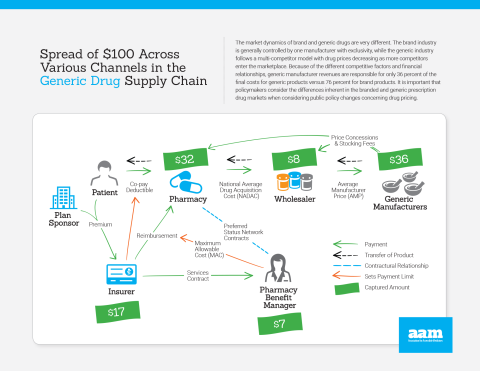
Source: IQVIA, US Market Access Strategy Consulting Analysis, January 18, 2022. Dollar amount is reflective of a 30-day supply.
Generic drug makers are not to blame for high out of pocket costs.
Policymakers can address these challenges and ensure the sustainability of the generic and the emerging biosimilar medicines markets. The AAM Roadmap For Ensuring Patient Access has key steps policymakers can take to ensure all Americans continue to benefit from a competitive and robust generics and biosimilars industry.

Receive relevant industry news, event information and the latest resources on biosimilars and generic medicines.
For the latest updates, follow us on social media.